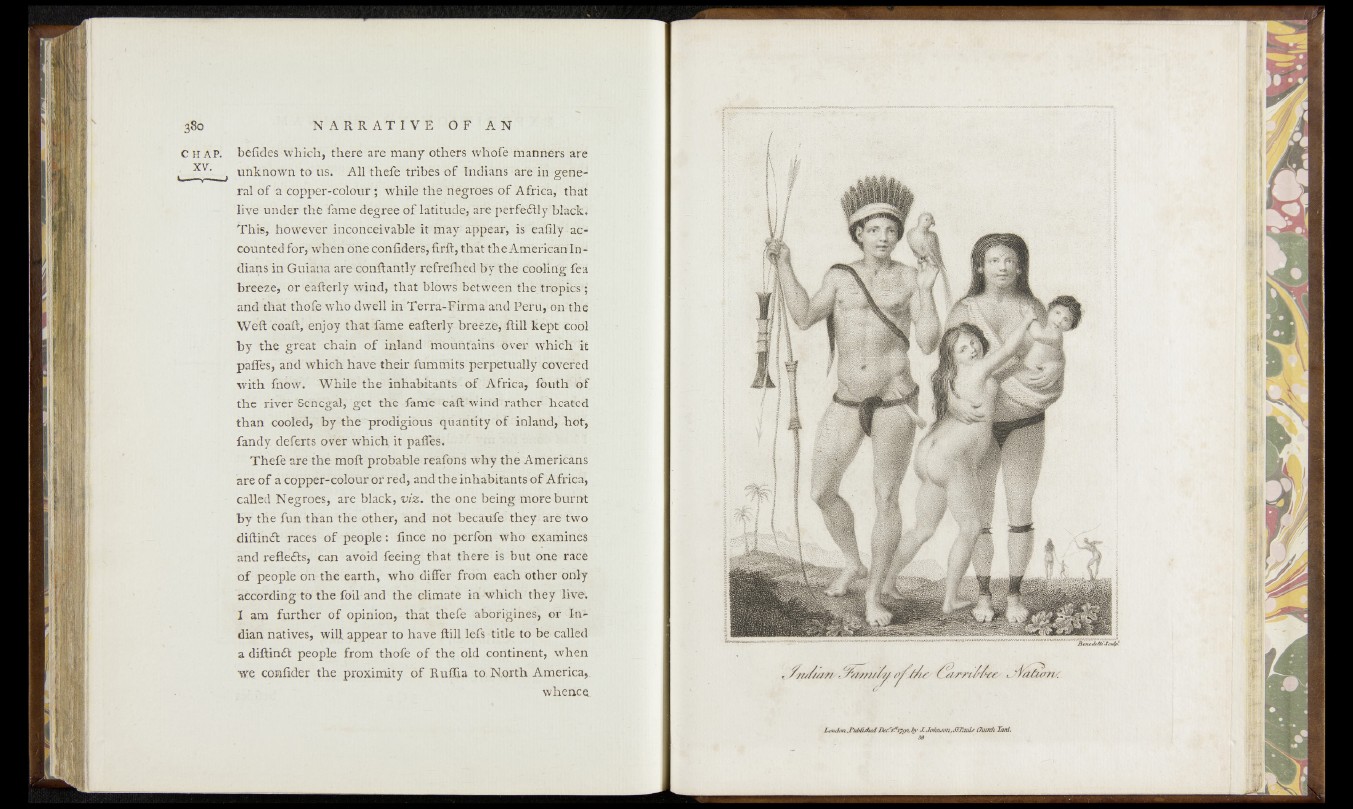
380 N A R R A T I V E OF A N
chap, beMes which, there are many others whofe!manners are
r. unknown to us. All thefe tribes of Indians are in general
of “a copper-colour * while the riëgrôès of Affiéa, that
live under the famé dégréé o f làfitt$<3^ 'ÿ^jîél'fë6llÿ;“bîàdkl ’
This, however inconceivable it may- appear', is eafily-accounted
lor, when one confiders, firft, that theAmericahln-
dians in Guiana areconftantly r éfr e ftied hÿ the cooling feat
breeze, or eafterly wind, that blows bètWéëfi thé trppîfe;
andthat thOfè who dwell in-TerraTfirma;ah#Fetti,!on-!th©
Weft-coaft, enjoy that fame eafterly breeze, ftill kept cool
by the. great chain of inland tiiouhtains bver WhiOK' ft
pàffès, and which have their fummits perpetually cOvef ed
with fhow. Whüë thé inhabitants of ;A frie^
the nvèf "Senegal, get the famé Taft'Wind^rathef heatéd
than cooled, by-the prodigious quantity of inland* hot,
fandy defers over which, it paffés.
Thefe are the moft probable reafons why the Americans
are of a copper-colour or red, and the inhabitants o f Africa^
called Negroes, are black, viz. the one being more burnt
by the fun than the other, and h(a -bèc|ftfé they ■ are two
diftînél races of people : fîncé no perfon who examines
and reflects, can avoid feeing that there is but one race
of people on the earth, who differ from each other only
according to the foil-and the climate in-which they ‘livO.
I am further of opinion, that thefe aborigines^ Of Indian
natives, will appear to have ftill lefs title to be called
a diftinét people from thofe of the old continent, when
we confider the proximity of Ruffia to. North America,.
whence.